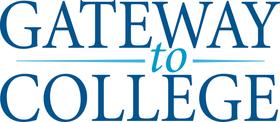- The Mission of El Camino College is to meet the educational needs of our diverse community and ensure student success by offering quality, comprehensive educational opportunities.
School Highlights
El Camino Community College District serves 30,239 students (27% of students are full-time).
The college's student-teacher ratio of 29:1 is lower than the state community college average of 32:1.
Minority enrollment is 87% of the student body (majority Hispanic), which is more than the state average of 77%.
Quick Facts (2025-26)
- Enrollment: 30,239 students
- In-state tuition: $1,142
- Out-state tuition: $5,678
- Student-teacher ratio: 29:1
- Minority enrollment: 87%
- Source: Integrated Postsecondary Education Data System (IPEDS)
Top Rankings
El Camino Community College District ranks among the top 20% of public schools in California for:
Category
Attribute
Affordability
Community Size
Debt For Students
School Overview
The teacher population of 1,037 teachers has stayed relatively flat over five years.
El Camino Community College District
(CA) Community College Avg.
Carnegie Classification
Associate's Colleges: High Transfer-High Traditional
Baccalaureate/Associate's Colleges: Associate's Dominant
Institution Level
At least 2 but less than 4 years
At least 2 but less than 4 years
Institution Control
Public
Public
Total Faculty
1,037 staff
315 staff
School Calendar
Student Body
The student population of El Camino Community College District has grown by 24% over five years.
The student-teacher ratio of 29:1 has increased from 20:1 over five years.
The El Camino Community College District diversity score of 0.73 is more than the state average of 0.70. The school's diversity has stayed relatively flat over five years.
Total Enrollment
30,239 students
9,796 students
Student-Teacher Ratio
29:1
32:1
# Full-Time Students
8,090 students
1,259 students
# Part-Time Students
22,149 students
8,537 students
# Enrollment Undergraduate
302 students
242 students
# Full-Time Undergraduate Students
8,090 students
1,250 students
# Full-Time Graduate Students
n/a
63 students
# Part-Time Undergraduate Students
22,149 students
8,299 students
# Part-Time Graduate Students
n/a
10 students
Total Dormitory Capacity
n/a
121 students
% American Indian/Alaskan
n/a
n/a
% Asian
12%
13%
% Hispanic
46%
47%
% Black
13%
7%
% White
13%
23%
% Hawaiian
n/a
1%
% Two or more races
4%
5%
% Non Resident races
1%
1%
% Unknown races
10%
3%
Diversity Score
0.73
0.70
College Completion Rate (Students who graduate in less than 4 years)
35%
42%
College Completion Rate (Students who graduate in 4 years or more than 4 years)
n/a
43%
Average Graduate Earnings (10 Years)
$34,900
$34,700
Tuition and Acceptance Rate
The public in-state tuition of $1,142 is less than the state average of $1,516. The in-state tuition has stayed relatively flat over four years.
The public out-state tuition of $5,678 is less than the state average of $6,779. The out-state tuition has declined by 25% over four years.
In-State Tuition Fees
$1,142
$1,516
Out-State Tuition Fees
$5,678
$6,779
% Students Receiving Some Financial Aid
66%
85%
Median Debt for Graduates
$5,133
$10,063
Median Debt for Dropouts
$5,500
$6,000
Acceptance Rate
n/a
93%
Source: 2024 (or latest year available) Integrated Postsecondary Education Data System (IPEDS) , School Administrators
School Notes
- Founded in 1947, El Camino College is situated on a beautiful and spacious 126-acre campus near Torrance, California. The college enrolls more than 25,000 students each semester and boasts a curriculum of over 850 highly regarded academic and career programs taught by exceptional faculty. Today, El Camino College students enjoy a broad curriculum featuring nearly 2,500 different classes offered in some 850 different programs. With more courses available during a variety of class times, including online and telecourses, students have wide flexibility in individual scheduling. The college confers the associate degree each spring on some 1,400 students who have completed their 60 semester units and who have satisfied their major field of study obligations. Many students each year also qualify for certificates of completion, signifying course requirements have been met in major skill areas. Located centrally in the South Bay, the El Camino College District encompasses five unified and high school districts, twelve elementary school districts and nine cities, a population of almost one million. The El Camino Community College District includes the cities of El Segundo, Manhattan Beach, Hermosa Beach, Redondo Beach, Torrance, Lawndale, Hawthorne, Lennox and Inglewood. El Camino College has been proud to serve our community's educational and cultural needs through outstanding course offerings, diverse entertainment venues, and exceptional athletic and fitness opportunities.
Frequently Asked Questions
How much does El Camino Community College District cost?
El Camino Community College District's tuition is approximately $1,142 for In-State students and $5,678 for Out-State students.
What is El Camino Community College District's ranking?
El Camino Community College District ranks among the top 20% of community college in California for: Least expensive tuition, Largest student body and Least debt for graduating students.
Recent Articles

Community College Success Rates 2025: Outcomes & Trends
Updated 2025 analysis of community college success rates, completion, transfer, costs, enrollment, and strategies that shape student outcomes.

Community Colleges in 2025: Combating Stereotypes with Impact
Updated insights on how community colleges are dispelling myths, growing enrollment, and expanding pathways in 2025.

2025 FAFSA Changes Explained for Community College Students
A comprehensive guide to 2025 FAFSA changes, what community college students must know, new eligibility rules, timelines, and tips to maximize federal aid.







